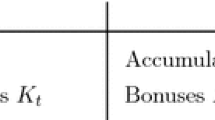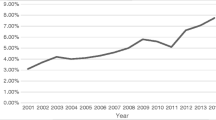Abstract
Pension solidarity can no longer be taken for granted. Due to demographic changes - and hence a growing retiree/employee ratio - additional contributions offer steadily fewer opportunities for clearing pension shortfalls. Together with the growing costs of contribution volatility and the trend towards short-termism, this means that the added value of solidarity is increasingly being called into question. A carefully argued and well-substantiated answer is therefore in order.
What is the added value of solidarity and what is an 'optimal' pension contract? This contribution seeks to provide a survey of what we can learn about these issues from the current academic literature and to identify those areas where further in-depth research is warranted. The starting point consists of the private and collective pension contracts that are perceived to be optimal in the academic literature. However, the practical questions regarding pension funds and the economic environment in which pension funds operate are considerably more complex than assumed in the literature. Additional research is necessary to answer the central questions concerning the added value of pension solidarity and the optimal form of pension contracts.
This contribution analyses how the assumptions and findings of the WRR study (Boender et al., 2000) relate to the customary assumptions in the academic literature. It specifies what we can learn from this about the added value of pension solidarity as calculated in that study.
The insights in this contribution do not result in a single uniform answer regarding the exact added value of pension solidarity and the precise form of optimal pension contracts. Our aim here is rather to arrive at a number of concrete research questions in order to gain a deeper understanding of the underlying considerations and to be able to build a bridge in the near future between the academic literature and complex reality.
Access this chapter
Tax calculation will be finalised at checkout
Purchases are for personal use only
Preview
Unable to display preview. Download preview PDF.
Similar content being viewed by others
Literature
Boender, C.G.E., S. van Hoogdalem, E. van Lochem and R.M.A. Jansweijer, Intergenerationele solidariteit en individualiteit in de tweede pensioenpijler: Een scenario-analyse, WRR (Scientific Council for Government Policy) report 114, The Hague: WRR, 2000.
Bovenberg, A.L., R.S.J. Koijen, Th.E. Nijman and C. Teulings, ‘Saving and investing over the life cycle and the role of collective pension funds’, Netspar panel paper, Tilburg University, 2007.
Constantinides, G., J. Donaldson, and R. Mehra, ‘Junior cannot borrow. A new perspective on the equity premium puzzle’, Quarterly Journal of conomics, pp. 269–296, 2002.
Cui, J, F. de Jong and E. Ponds, The value of intergenerational transfers within unded pension system, Working paper presented at the 4th RTN Workshop on ‘Financing Retirement in Europe: Public Sector Reform and Financial Market Development’, Louvain, België, 2005.
Munnel, A. and M. Sundèn, Coming Up Short: The Challenge of 401(k) Plans, Washington: The Brookings Institution, 2004.
Rooij, M.C.J. van, C.J.M. Kool and H. Prast, Risk-return preferences in the ension domain: are people able to choose?, DNB working paper 25, Amsterdam: De Nederlandsche Bank, 2004.
Siegel, J,J., Stocks for the Long Run, New York: McGraw-Hill, 2004.
Steehouwer, H., Macroeconomic Scenarios and Reality, thesis, VU University Amsterdam, 2005.
Teulings, C.N. and C.G. de Vries, ‘Generational Accounting, Solidarity and Pension Losses’, De Economist, 154(1), pp. 63–83, 2006.
Tversky, A. and D. Kahneman, ‘Advances in Prospect Theory: Cumulative Representation of Uncertainty’, Journal of Risk and Uncertainty, 1992, pp. 297–323.
Author information
Authors and Affiliations
Editor information
Editors and Affiliations
Rights and permissions
Copyright information
© 2007 Springer-Verlag Berlin Heidelberg
About this chapter
Cite this chapter
Boender, C.G.E., Bovenberg, A.L., van Hoogdalem, S., Nijman, T.E. (2007). Optimal risk-sharing in private and collective pension contracts. In: Steenbeek, O., van der Lecq, F. (eds) Costs and Benefits of Collective Pension Systems. Springer, Berlin, Heidelberg. https://doi.org/10.1007/978-3-540-74374-3_5
Download citation
DOI: https://doi.org/10.1007/978-3-540-74374-3_5
Publisher Name: Springer, Berlin, Heidelberg
Print ISBN: 978-3-540-74373-6
Online ISBN: 978-3-540-74374-3
eBook Packages: Business and EconomicsEconomics and Finance (R0)




